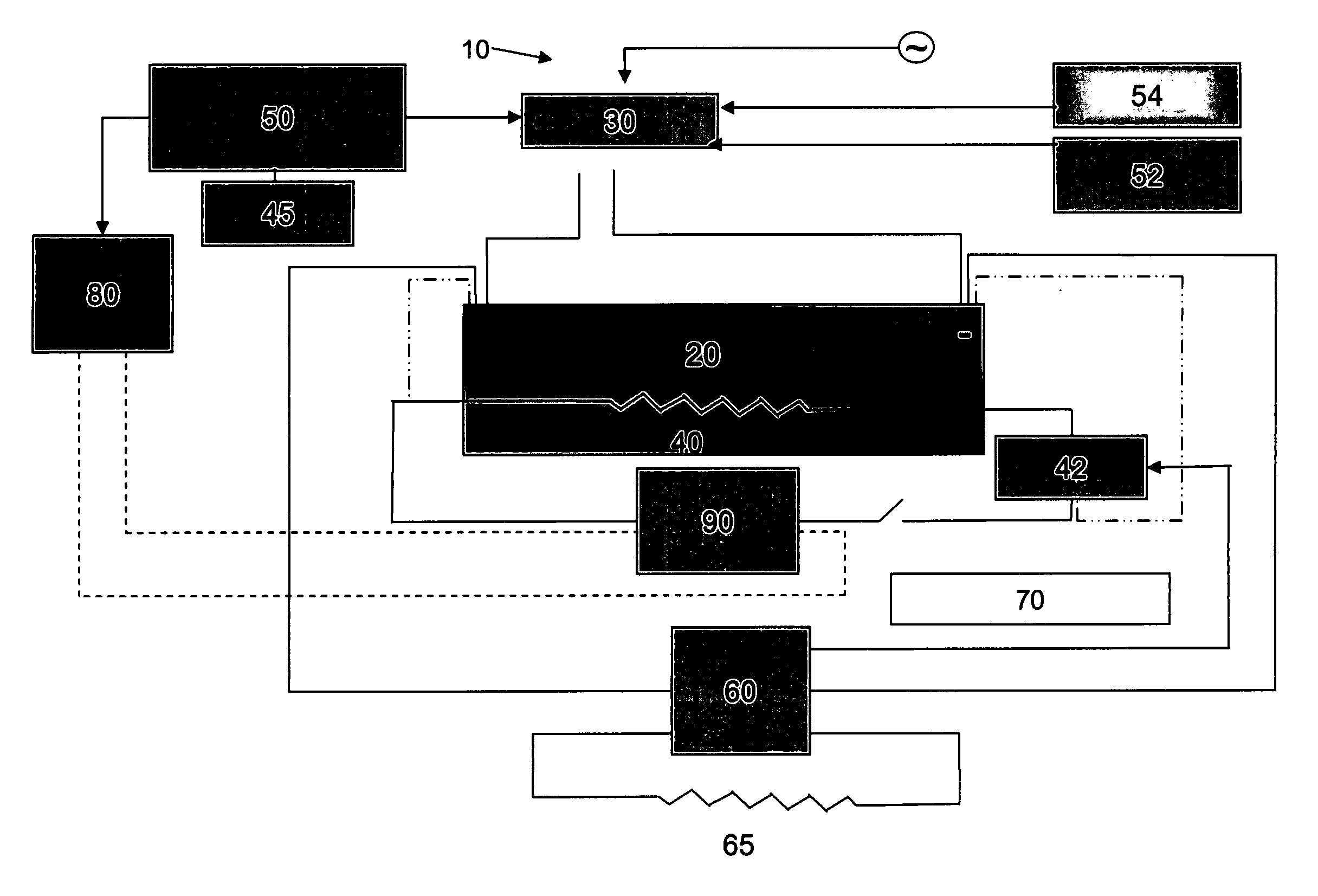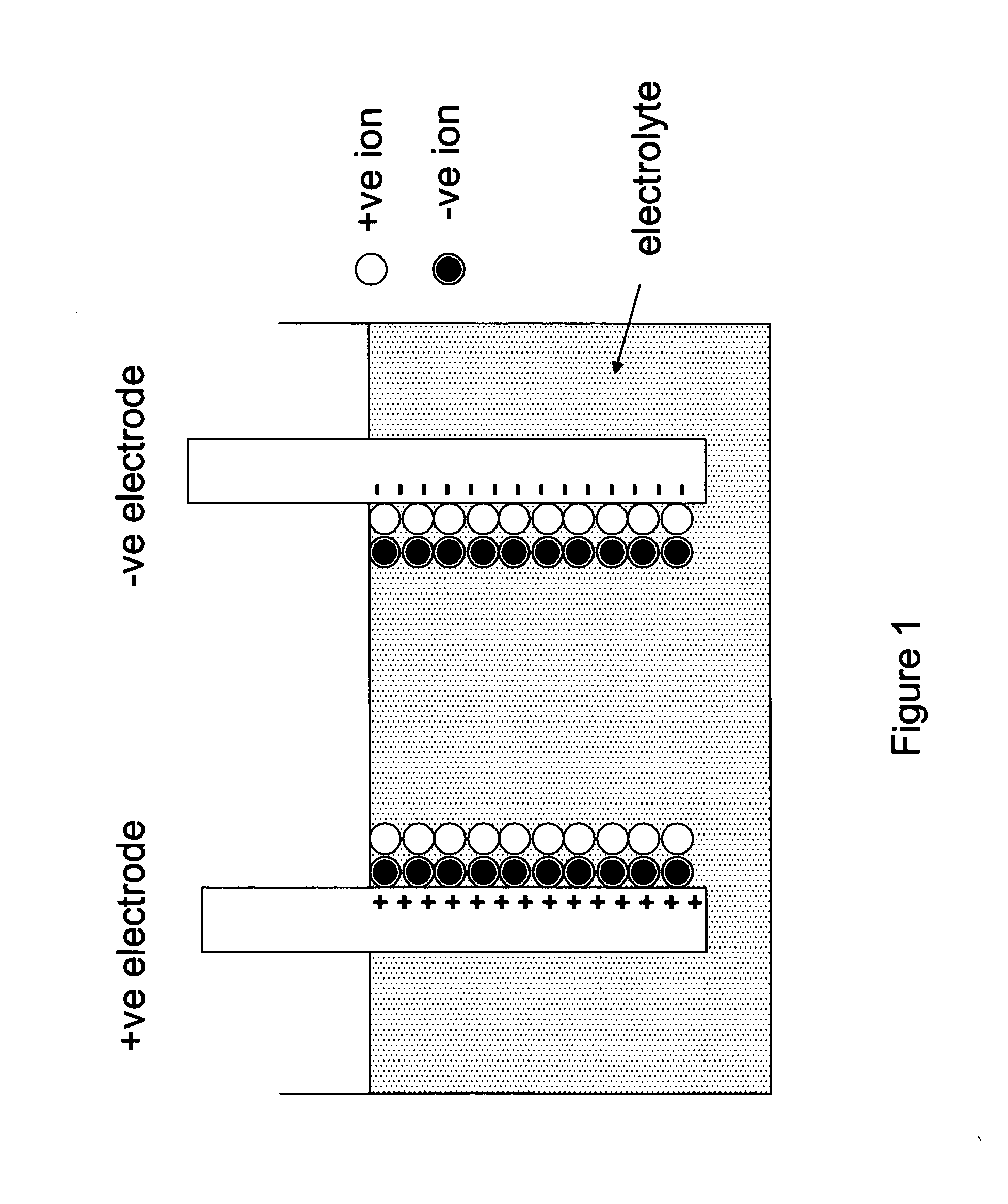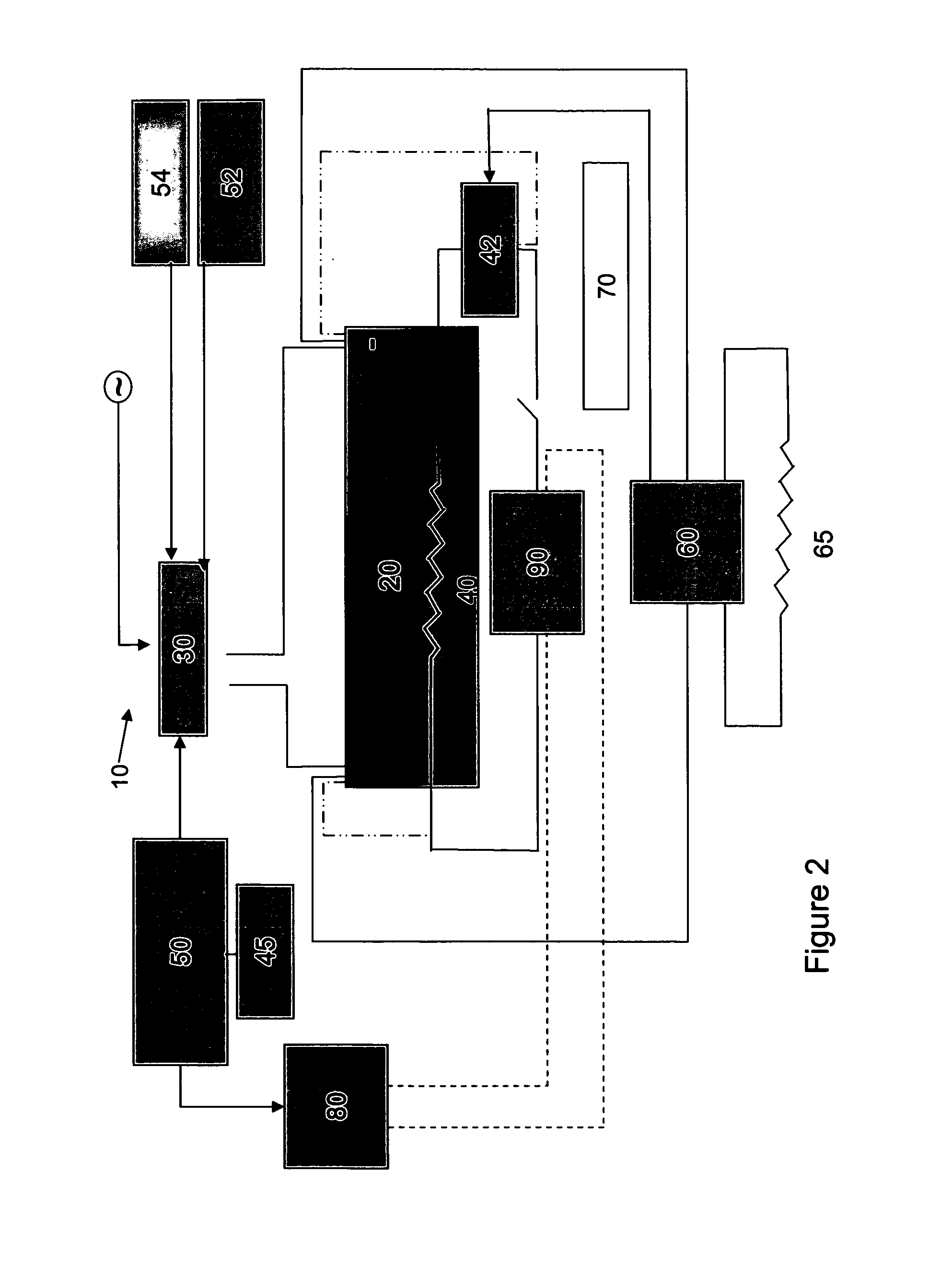Fuel cell/ supercapacitor/ battery power system for vehicular propulsion
- Summary
- Abstract
- Description
- Claims
- Application Information
AI Technical Summary
Benefits of technology
Problems solved by technology
Method used
Image
Examples
Embodiment Construction
[0051]The current invention describes a device structure and manufacturing method to fabricate an electrochemical double layer supercapacitor with a molten salt electrolyte: we prefer to call this device an electronic battery, because although it behaves like a capacitor, storing charge at the interface between the electrodes and dielectric, the amounts of energy that can be stored per unit volume (energy density) and per unit mass (specific energy) are more typical of a battery than a capacitor. The electronic battery is made by combining metallic powders and molten salt electrolytes to form the composite electrode structures; every other pair of electrodes is separated by a thin dielectric. Although this device is primarily intended to be incorporated into a system for electric vehicle propulsion, the device can also be made as a thin-film stack, making it suitable for use in place of thin-film batteries for some MEMS (Micro-ElectroMechanical Systems), SiP (System in a Package) an...
PUM
| Property | Measurement | Unit |
|---|---|---|
| Melting point | aaaaa | aaaaa |
| Melting point | aaaaa | aaaaa |
| Electrical conductor | aaaaa | aaaaa |
Abstract
Description
Claims
Application Information
 Login to View More
Login to View More - R&D
- Intellectual Property
- Life Sciences
- Materials
- Tech Scout
- Unparalleled Data Quality
- Higher Quality Content
- 60% Fewer Hallucinations
Browse by: Latest US Patents, China's latest patents, Technical Efficacy Thesaurus, Application Domain, Technology Topic, Popular Technical Reports.
© 2025 PatSnap. All rights reserved.Legal|Privacy policy|Modern Slavery Act Transparency Statement|Sitemap|About US| Contact US: help@patsnap.com



